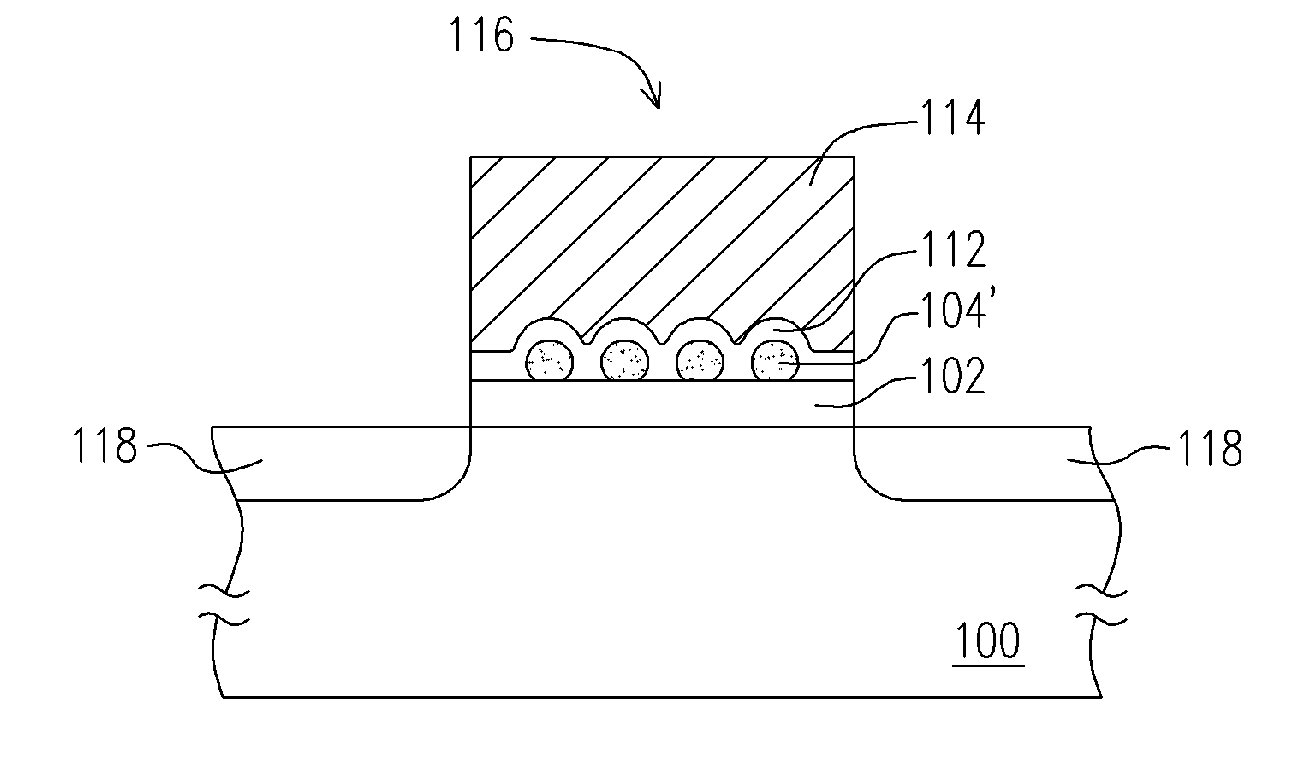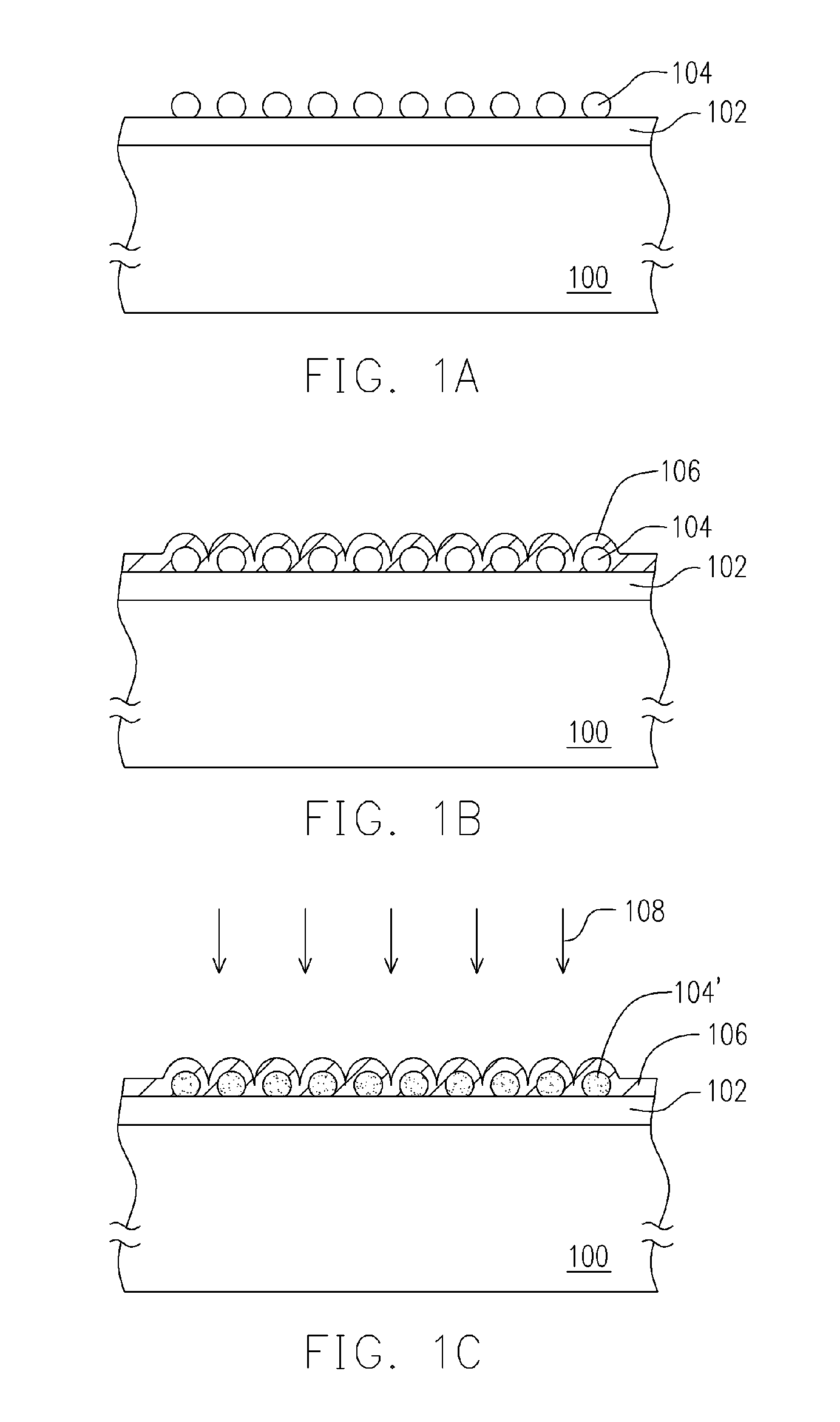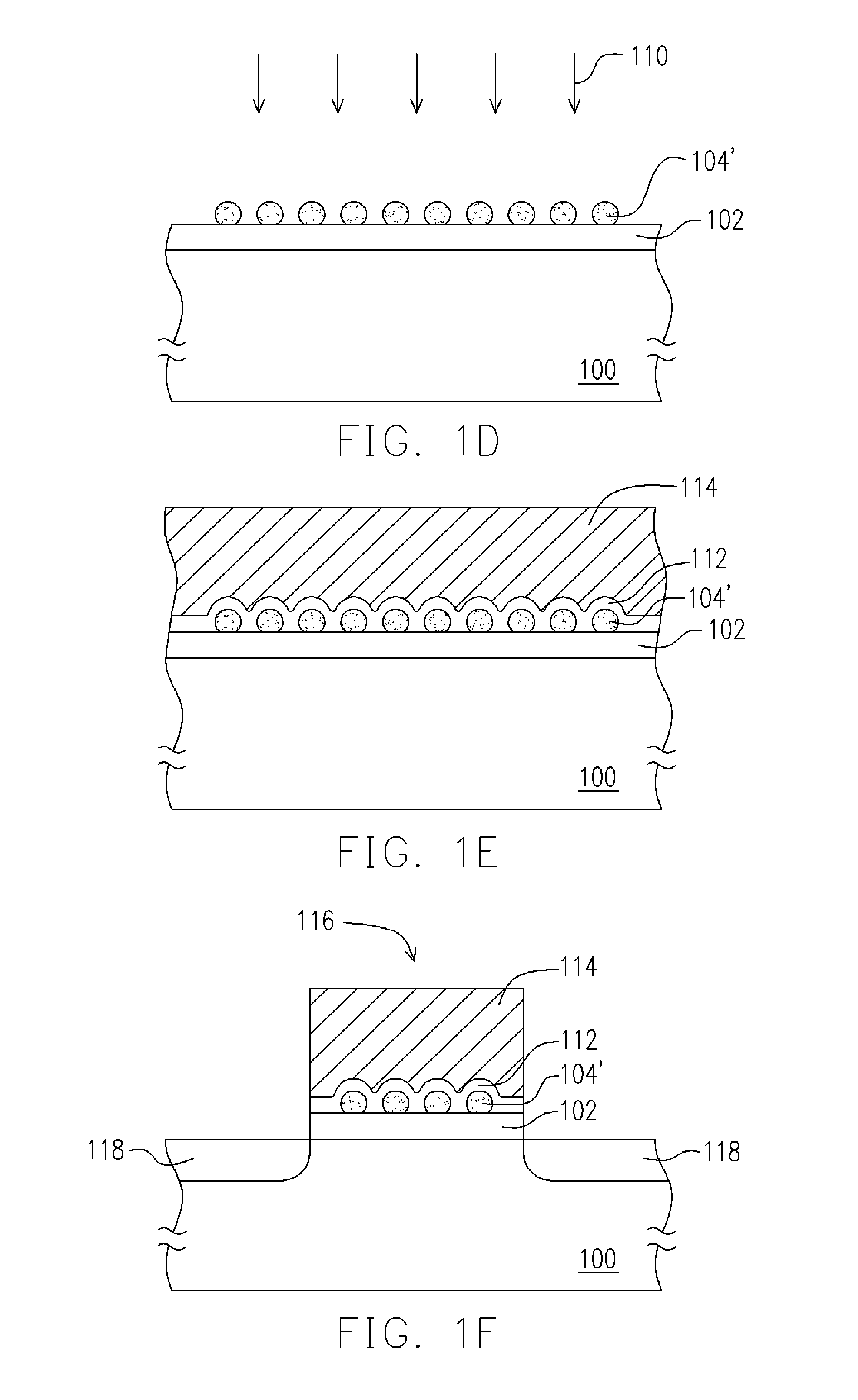Method for manufacturing non-volatile memory
a non-volatile memory and manufacturing method technology, applied in the direction of basic electric elements, electrical apparatus, semiconductor devices, etc., can solve the problems of affecting the reliability of the device, the electric charge injected into the charge-trapping layer cannot be evenly distributed over the entire charge-trapping layer, and the conventional non-volatile memory cannot integrate with the typical complementary metal-oxide-semiconductor (cmos) circuit process at the same time, so as to achieve effective promotion of device reliability
- Summary
- Abstract
- Description
- Claims
- Application Information
AI Technical Summary
Benefits of technology
Problems solved by technology
Method used
Image
Examples
Embodiment Construction
[0031] Reference will now be made in detail to the present preferred embodiments of the invention, examples of which are illustrated in the accompanying drawings. Wherever possible, the same reference numbers are used in the drawings and the description to refer to the same or like parts.
[0032]FIGS. 1A through 1F are schematic cross-sectional views showing the steps for producing a non-volatile memory according to one embodiment of the present invention. First, as shown in FIG. 1A, a substrate 100 is provided. The substrate 100 is a silicon substrate, for example. Then, a tunneling dielectric layer 102 is formed on the substrate 100. The tunneling dielectric layer 102 is a silicon oxide layer formed, for example, by performing a thermal oxidation process. Obviously, the tunneling dielectric layer 102 may also be fabricated by using some other suitable methods. Thereafter, a plurality of silicon nanocrystals 104 is formed on the tunneling dielectric layer 102. The silicon nanocrysta...
PUM
| Property | Measurement | Unit |
|---|---|---|
| dielectric | aaaaa | aaaaa |
| conductive | aaaaa | aaaaa |
| metallic | aaaaa | aaaaa |
Abstract
Description
Claims
Application Information
 Login to View More
Login to View More - R&D
- Intellectual Property
- Life Sciences
- Materials
- Tech Scout
- Unparalleled Data Quality
- Higher Quality Content
- 60% Fewer Hallucinations
Browse by: Latest US Patents, China's latest patents, Technical Efficacy Thesaurus, Application Domain, Technology Topic, Popular Technical Reports.
© 2025 PatSnap. All rights reserved.Legal|Privacy policy|Modern Slavery Act Transparency Statement|Sitemap|About US| Contact US: help@patsnap.com



